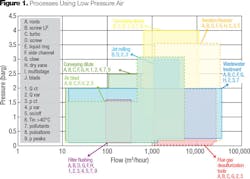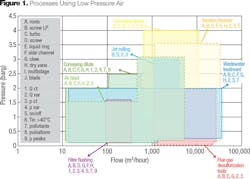Value-Based Procurement - Steps in the Right Direction
By Tom McCurdy
For some time, WWEMA has advocated for changing the mindset of equipment procurement from low-bid to lowest life-cycle cost evaluation as a means to encourage the growth of new technologies and to improve operating costs. This is a very daunting task. As a manufacturer, Aerzen faces the same challenge. We encourage the consulting engineers to compare manufacturers based on energy savings. Unfortunately, once the project is issued to contractors, much of that impact is lost, since the contractor has no incentive to accept anything other than the lowest bid to meet the specifications.
That model has changed somewhat with the introduction of high-speed turbo blowers (HST). When they were introduced to the U.S. market ten years ago, HSTs promised high efficiency and reduced energy costs for aeration processes. Since aeration accounts for 50 percent or more of the electric bill for a municipal wastewater plant, HST was readily accepted as a means to reduce energy costs. At the time, there were several incentives from utilities or energy consortiums designed to offset the higher capital cost of HST. This allowed for the introduction of an innovative technology without changing the procurement method. Since then, the consulting engineers have included some versions of energy cost evaluations. However, instead of true life-cycle evaluations prior to equipment purchase, penalties were assessed for excessive variance between proposed and tested energy usage. While this is certainly a step in the direction of life-cycle evaluation, it does not shift the paradigm of low-bid evaluation.
The European Union has adopted standards for air compressor efficiency based on “standard air” (i.e., plant utility air) compressors, as a means to reduce energy costs by roughly 1.0 to 1.5 terawatt hours (TWh) per year by 2030. The regulation will ban less efficient compressors and force the industry to become more energy efficient. Building on that regulation, the EU is looking at expanding that regulation to include low pressure air. The total energy usage for this sector is 42 TWh/year. Low pressure air encompasses many processes, including wastewater treatment, as shown in the graphic from PNEUROP, a European association of over 130 manufacturers of blowers, compressors, and related equipment (see Fig. 1).
This is definitely less straightforward than standard air, considering the varied uses of low pressure air and the technologies available to deliver the air. However, there is a significant energy reduction potential in this area. The low-pressure air standard is in the process of being developed by the EU and includes assessment of “wire to air” performance, which is parallel to the ASME PTC-13 standard in the U.S.
In the U.S., the Department of Energy (DOE) has issued a rule establishing new test procedures for rotary positive displacement compressors, designed to improve energy efficiency and to conserve our energy resources. The rule is part of the Energy Policy and Conservation Act of 1975. Many of the provisions of the EU standard are parallel with the DOE rule. The final rule was issued on January 4, 2017, with the effective date of February 3.
The DOE rule describes what constitutes a compressor, the accessories included in a compressor system, the operating flow, pressure, and power range, the testing standards, points, and tolerances. While the rule does not set an efficiency standard, it allows for a standard of comparison, leading to a labeling standard, compliance with federal conservation standards, certification and enforcement. This will force manufacturers to comply in order to remain in the market.
Unfortunately for the wastewater industry, the DOE rule only applies to standard air compressors rather than low-pressure blowers and compressors. However, the DOE rule is another step in the right direction, and includes many of the criteria that would easily apply to wastewater aeration blowers:
The use of ISO-1217 as the testing standard is the same one used for positive displacement blowers.
The inclusion of accessories avoids some of the pitfalls of comparison common to blower evaluation, placing all manufacturers on the same basis rather than simply comparing the “bare compressor” and leads to the use of more efficient accessories.
Partial load efficiency (at 100, 70, and 40 percent load) and corresponding time values (25, 50, and 25 percent, respectively) is a more representative evaluation than simply using design point comparisons.
The rule could form the basis of a similar standard for wastewater aeration blowers and compressors, as is currently being pursued by the EU. With over 16,000 wastewater treatment facilities in the U.S., and over 50 percent of the energy required for secondary treatment used for aeration blowers, there is a significant amount of energy to be saved. As the cost of energy rises, the incentive for more efficient blowers and compressors becomes even greater.
About the Author: Tom McCurdy is national sales manager with the environmental division of Aerzen USA Corporation located in Coatesville, Pa. He is a Board Member of the Water and Wastewater Equipment Manufacturers Association (WWEMA). For more information about WWEMA, visit www.wwema.org. Circle No. 234 on Reader Service Card

